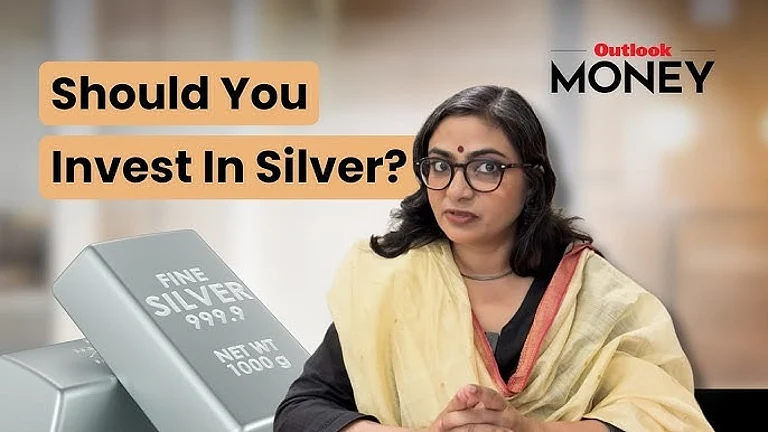Outlook Money’s 40After40 event got to a rocking start at New Delhi’s Pragati Maidan as people from all walks of life poured in to take financial lessons from the stellar panel of experts on Day 1. Shrinivas Khanolkar, Head – Products, Marketing & Corp Comm, Mirae Asset Investment Managers (India) spoke about How To Keep Increased Lifestyle Expenses Under Control, and he touched on various aspects of changing expenditure patterns and preferences and said that people want to spend more on premium experiences. He also stressed the need for disciplined investment and withdrawal and the power of compounding. Here are the ten top things Shrinivas Khanolkar highlighted during his session:
1. For a Rs. 50,000 spend, you will draw your credit card. But through Rs 200, Rs 500 and Rs 2000 of UPI spend, you are spending a similar amount going from your savings bank account. So, this fascination of real versus UPI payments is also costing us daily which we don't realise because we are not looking at this data on a daily basis. You are not using credit to buy, you are using your own money to buy.
2. Food expenses are also falling. People are investing in experiences. People are looking at comfort. More SUVs are being bought now compared to Sedans or Hatchbacks as people want a premium life.
3. Recently, one travel portal released a very interesting report that only one-third of international bookings were made more than one month before the travel date. So, gone are the days when summer holidays are planned in advance. If you are getting a good deal, you are going ahead and booking.
4. If you are having a long weekend, you are going ahead and booking. There is a 64 per cent rise in family bookings between 2023 versus 2022. People want to travel and travel with their families. 56 per cent of reserved hotel rooms were less than one week before the travel day.
5. People are also spending a lot on weddings. It ranks second in expenses after food and grocery but how much is that? It's 15 per cent of our per capita income that is being spent on weddings.
6. Athleisure is another segment which is growing, fitness has completely changed. Even in the smaller cities, you will see a lot of gyms and people going there and exercising. What strikes me the most is who is the end user in this segment. It is the women! They actually prefer to have more branded gym clothing and branded gym equipment than men when it comes to Athleisure.
7. India’s expenditure pattern is telling us how the economy is changing, how the demographics are changing, and how people want to think differently.
8. We did some analysis for the period between July 1999 and February 2023. That's about 24 years. 24 years ago, if you had invested ten lakh rupees and they did nothing, Nifty 50 would have itself compounded and given you close to Two crore. But right at the beginning, if you would have removed about Rs 70,000 for a phone, your net saving falls by Rs 15 lakhs. If you had withdrawn three lakh rupees for a holiday from this kitty, your valuation would have fallen by about 50 lakhs. And if you took out about ten lakh rupees for a family emergency or some down payment or something, then it actually becomes half. So, compounding plays a very important role provided you are disciplined.
9. We have seen some black swan events. I have seen three in my lifetime. The first was in 2000-2001 when the dot com bubble burst happened. Then you had the 2008 global financial crisis and then you had the 2020 Covid pandemic. If you were about to withdraw your money at that point in time, what would happen? So, we need to think differently and we need to also plan in a different way.
10. If you did a monthly SIP of Rs 10,000 over 25 years then you would have invested about Rs 30 lakh in SIP. And then from there onwards if you start withdrawing even Rs 50,000 monthly so your total corpus that you would have withdrawn in the next ten years would be about 54 lakh rupees. Yet, you are left with a corpus of about 3.9 crores. But our topic was inflation so let's add inflation to it. We should keep our inflationary spending under control. We can opt for measures which can mitigate the risk of sudden black swan events of sudden volatility. Also, use different products very smartly in mutual funds to create wealth to preserve and distribute.
















